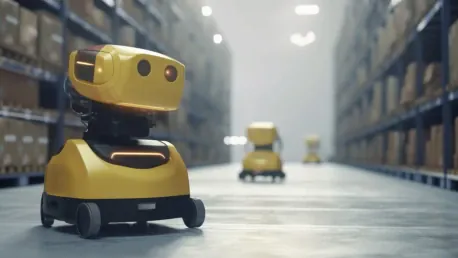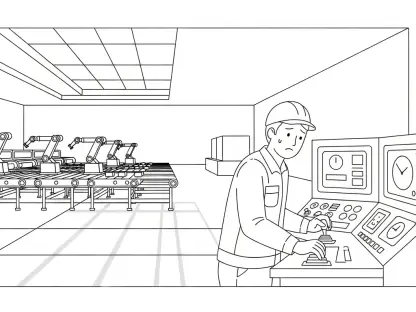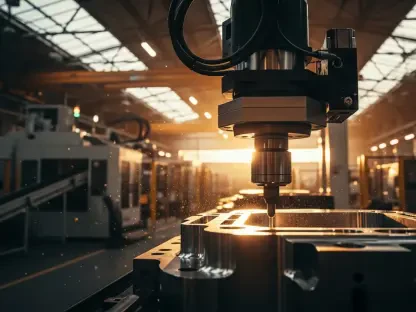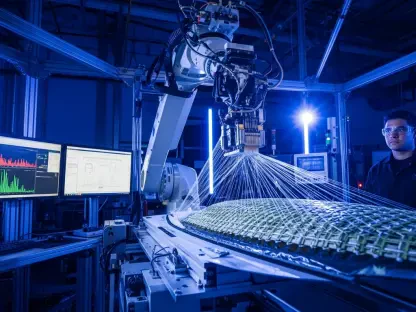The dramatic challenges faced by modern supply chains, such as labor shortages, rising costs, and unpredictable demand, highlight the necessity of innovative approaches to remain competitive. Traditional methods are increasingly proving insufficient within the volatile environment created by these challenges, particularly in industries like warehousing, distribution, manufacturing, and logistics. Notably, 37% of workforces in these sectors experience labor shortages. As the landscape continues to evolve, autonomous robotics powered by artificial intelligence (AI) and automation are emerging as transformative technologies poised to drive a new era of efficiency in supply chain operations. By automating tasks traditionally performed by humans, such as sorting, picking, and inventory management, these robots enhance precision and efficiency, thus effectively addressing systemic workforce shortages. Automation’s ability to reduce human error and expedite operations translates to faster inventory turnovers, increased throughput, and significant cost savings, making it indispensable in the current scenario.
Enhancing Efficiency and Precision in Supply Chains
Autonomous robots have revolutionized various industries, with supply chain operations experiencing a particularly profound impact. Repetitive tasks such as sorting, picking, and inventory management, widely regarded as monotonous and labor-intensive, are now being performed with enhanced precision and speed by robots integrated with advanced AI systems. This transition not only ameliorates workforce shortages but also significantly reduces the incidence of human error. Faster inventory turnover is a naturally occurring result of these improvements. Moreover, a reduction in operational costs and an increase in system throughput can be observed as primary benefits derived from this automation. Robots ensure continuous warehouse and distribution center operations by functioning around the clock, thereby heightening efficiency and flexibility.
The data-driven nature of AI-powered systems further contributes to these efficiency gains. By analyzing large volumes of data, AI can provide more accurate demand forecasting, which allows businesses to better align their inventory with market needs. Such predictive capabilities ensure that supply does not outstrip demand, reducing instances of stockouts or overstocking, both of which can incur significant costs. Real-time inventory tracking conducted by autonomous robots ensures accurate, up-to-date information regarding stock levels and locations. This level of precision reduces waste and mitigates errors, leading to optimal inventory management practices.
Augmenting Human Capabilities, Not Replacing Jobs
A common misconception about the adoption of autonomous robots in supply chains is the fear of human job displacement. However, rather than replacing human workers, automation primarily serves to augment their capabilities. By taking over routine and repetitive tasks, robots free human employees to focus on higher-value strategic activities such as analysis, decision-making, problem-solving, and customer interaction. This shift in task allocation can lead to improved job satisfaction and heightened productivity among human workers.
Furthermore, the integration of autonomous robots can create new job opportunities, focusing on the development, maintenance, and supervision of robotic systems. Positions that require a higher level of expertise and advanced technical skills will likely become more in demand as automation becomes more widespread. Consequently, employees in supply chain sectors will need to undergo training to adapt to these new roles, which necessitates investment in education and upskilling initiatives by companies committed to transitioning smoothly into this automated future.
Preparing for an Automated Future
As supply chains generate millions of data records daily, the potential for advancements in AI and automation is vast. Machine learning algorithms, enhanced computer vision, and sophisticated sensor technology are set to refine operations even further, providing greater precision, flexibility, and cost-effectiveness. These technological advancements are expected not only to benefit large corporations but also to become accessible and cost-effective for small and medium-sized businesses. This democratization of cutting-edge technology will help level the playing field in global markets, granting even smaller players a chance to compete effectively on the international stage.
The future of supply chain management is undeniably leaning towards increased automation and data-driven decision-making. With projections indicating significant growth in the AI robots market—estimated to reach nearly $112 billion by 2033—it is clear that the role of autonomous robots in supply chain efficiency is not just a fleeting trend but an essential evolution. Businesses must recognize that integrating AI and robotics is not merely an option but a fundamental necessity for ensuring agility, accuracy, and resilience in their operations. As companies embrace these technologies, they must also navigate the accompanying secondary challenges, such as cybersecurity risks and ethical considerations, requiring a balanced and informed approach to technological adoption.
Conclusion: Embracing the New Era of Automation
Modern supply chains face significant challenges such as labor shortages, rising costs, and unpredictable demand, emphasizing the need for innovative strategies to stay competitive. Traditional methods are proving insufficient in this volatile environment, especially in sectors like warehousing, distribution, manufacturing, and logistics. Interestingly, 37% of workforces in these industries report experiencing labor shortages. As the landscape evolves, autonomous robotics powered by artificial intelligence (AI) and automation are emerging as transformative technologies set to usher in a new era of efficiency in supply chain operations. By automating tasks traditionally done by humans—like sorting, picking, and managing inventory—these robots improve precision and efficiency, effectively alleviating workforce shortages. The automation of these tasks not only reduces human error but also speeds up operations, leading to faster inventory turnovers, increased throughput, and significant cost savings. This makes automation indispensable in today’s supply chain context.









